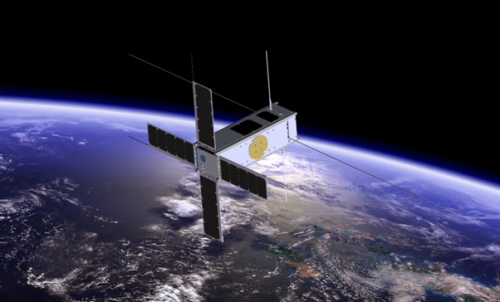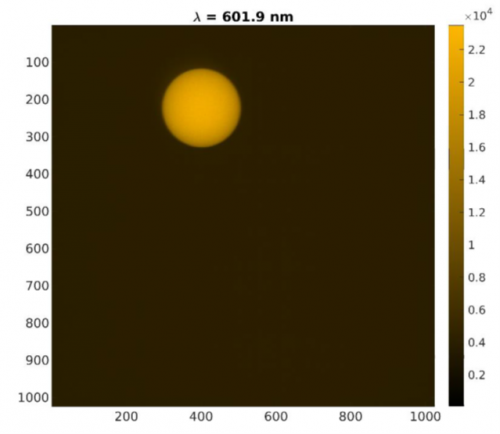Last week (September 2) marked the two-year anniversary of PICASSO’s launch, the first CubeSat mission of the Royal Belgian Institute for Space Aeronomy. It has demonstrated the feasibility of atmospheric remote sensing and in-situ ionospheric plasma measurement with a CubeSat and has taught us valuable lessons about this new technology.
PICASSO’s Tale: a mixed happy ending
PICASSO is a fantastic tale, one filled with hopes and excitement, while also revealing the complexities and inherent risk of developing cutting-edge technology for space missions. Ambitious in its conception at a time when the CubeSat industry was still in its infancy, PICASSO proved to be more complex and difficult to develop than anticipated by all partners involved, ultimately leading to both the failure of the mission’s avionics and the success as a scientific proof-of-concept.

Adorned in Gold
PICASSO was called "The Golden CubeSat" because it was coated in this non-reactive metal. The gold plating was done specifically because one of the instrument on board – SLP (see below) –required the spacecraft surface to be electrically conducting to decrease spacecraft charging effects during operation. This was an ambitious technological feat, which caused problems and delays because the solar panels initially couldn't survive the thermal testing. Cracks formed in the panels, which needed to be remade multiple times due to the manufacturing of the beautiful, but technically-challenging, gold coating.
PICASSO payload
The reason for the gold-plating and first of the two instruments onboard PICASSO, the Sweeping Langmuir Probes (SLP), is an instrument completely developed by BIRA-IASB. Its main objective was to gain insight into the magnetosphere-ionosphere coupling and the formation of the auroras. It uses four cylindrical Langmuir probes (golden cylinder in the picture below) attached on the side of the deployable solar panels to retrieve plasma parameters, namely electron density and temperature as well as ion density and spacecraft potential in the ionosphere (upper layer of the atmosphere, above 80 km altitude).
As the ionospheric density and temperature show a very high day-to-day variability, in-situ observations become very important to investigate spatial and temporal changes locally. SLP could successfully test all modes of measurement and acquired very clean current vs. potential, or I-V, curves for a total time of about 60 minutes (see example of I-V curve in the figure). An I-V curve can then be used to determine various parameters such as the ionospheric plasma density and temperature.

The second instrument, VISION (VIsible Spectral Imager for Occultation and Nightglow), was proposed by BIRA-IASB and developed by VTT (Finland). It was devoted to retrieving the vertical distribution of ozone in the stratosphere (12-50km) and the temperature profile up to the mesosphere (50-90km) by observing sunrises and sunsets at various wavelengths through the atmosphere. It successfully acquired several images of the Sun. However, due to a failure of the avionics system, the solar pointer failed and the interferometer could not be tested properly. Even with only a few images, we consider the VISION instrument a success as it demonstrated that atmospheric remote sensing with a CubeSat is feasible. The demonstrated proofs-of-concept through both VISION and SLP validate the idea that CubeSats / SmallSats are viable tools for important scientific studies and atmospheric monitoring with state-of-the-art instrumentation.
What’s next?
Despite the long and challenging path, we remain optimistic about the future of the technology demonstrated through the PICASSO mission. The scientists who developed the instruments would be happy to see the technology reused in possible future missions. And PICASSO has become a symbol of just how far humanity has come in space science: the success, the failure, the hopes and ambitions and dreams, bright and shining as the spacecraft’s beautiful golden surface.
Acknowledgements
PICASSO is the result of an international collaboration, led by the Royal Belgian Institute for Space Aeronomy (BIRA-IASB), and including AAC Clyde Space Ltd (United Kingdom), ESA (European Space Agency), VTT Technical Research Center (Finland) and the Centre Spatial de Liège (Belgium).
PICASSO was funded by the In-Orbit Demonstration element of ESA’s General Support Technology Programme (GSTP), by the Federal Science Policy, BELSPO. PICASSO also received financial support from the National Lottery.




